New Type Of Star System? Mysterious Radio Signal Puzzles Astronomers
New type of star system? Mysterious radio signal puzzles astronomers
by Laura Nicole Driessen

Meerkat telescope. Sotiris Sanidas, Author provided
After observing a part of the sky near the Southern Constellation of Ara for about two months using MeerKAT, a radio telescope based in the Karoo desert in South Africa, our team of scientists noticed something strange. The radio emission of an object brightened by a factor of three over roughly three weeks.
Intrigued, we continued watching the object and followed this up with observations from other telescopes. We discovered that the unusual flare came from a binary star system – two stars orbiting each other – in our own galaxy. The finding, published in the Monthly Notices of the Royal Astronomical Society, has, however, turned out to be very difficult to explain.
Keep reading
More Posts from Primordialbitch and Others
Pick Your Favorite Findings From Fermi’s First Decade
The Fermi Gamma-ray Space Telescope has been observing some of the most extreme objects and events in the universe — from supermassive black holes to merging neutron stars and thunderstorms — for 10 years. Fermi studies the cosmos using gamma rays, the highest-energy form of light, and has discovered thousands of new phenomena for scientists.
Here are a few of our favorite Fermi discoveries, pick your favorite in the first round of our “Fermi Science Playoff.”
Colliding Neutron Stars

In 2017, Fermi detected a gamma ray burst at nearly the same moment ground observatories detected gravitational waves from two merging neutron stars. This was the first time light and ripples in space-time were detected from the same source.
The Sun and Moon in Gamma Rays

In 2016, Fermi showed the Moon is brighter in gamma rays than the Sun. Because the Moon doesn’t have a magnetic field, the surface is constantly pelted from all directions by cosmic rays. These produce gamma rays when they run into other particles, causing a full-Moon gamma-ray glow.
Record Rare from a Blazar

The supermassive black hole at the center of the galaxy 3C 279 weighs a billion times the mass of our Sun. In June 2015, this blazar became the brightest gamma-ray source in the sky due to a record-setting flare.
The First Gamma-Ray Pulsar in Another Galaxy

In 2015, for the first time, Fermi discovered a gamma-ray pulsar, a kind of rapidly spinning superdense star, in a galaxy outside our own. The object, located on the outskirts of the Tarantula Nebula, also set the record for the most luminous gamma-ray pulsar we’ve seen so far.
A Gamma-Ray Cycle in Another Galaxy

Many galaxies, including our own, have black holes at their centers. In active galaxies, dust and gas fall into and “feed” the black hole, releasing light and heat. In 2015 for the first time, scientists using Fermi data found hints that a galaxy called PG 1553+113 has a years-long gamma-ray emission cycle. They’re not sure what causes this cycle, but one exciting possibility is that the galaxy has a second supermassive black hole that causes periodic changes in what the first is eating.
Gamma Rays from Novae

A nova is a fairly common, short-lived kind of explosion on the surface of a white dwarf, a type of compact star not much larger than Earth. In 2014, Fermi observed several novae and found that they almost always produce gamma-rays, giving scientists a new type of source to explore further with the telescope.
A Record-Setting Cosmic Blast

Gamma-ray bursts are the most luminous explosions in the universe. In 2013, Fermi spotted the brightest burst it’s seen so far in the constellation Leo. In the first three seconds alone, the burst, called GRB 130427A, was brighter than any other burst seen before it. This record has yet to be shattered.
Cosmic Rays from Supernova Leftovers

Cosmic rays are particles that travel across the cosmos at nearly the speed of light. They are hard to track back to their source because they veer off course every time they encounter a magnetic field. In 2013, Fermi showed that these particles reach their incredible speed in the shockwaves of supernova remains — a theory proposed in 1949 by the satellite’s namesake, the Italian-American physicist Enrico Fermi.
Discovery of a Transformer Pulsar

In 2013, the pulsar in a binary star system called AY Sextanis switched from radio emissions to high-energy gamma rays. Scientists think the change reflects erratic interaction between the two stars in the binary.
Gamma-Ray Measurement of a Gravitational Lens

A gravitational lens is a kind of natural cosmic telescope that occurs when a massive object in space bends and amplifies light from another, more distant object. In 2012, Fermi used gamma rays to observe a spiral galaxy 4.03 billion light-years away bending light coming from a source 4.35 billion light-years away.
New Limits on Dark Matter

We can directly observe only 20 percent of the matter in the universe. The rest is invisible to telescopes and is called dark matter — and we’re not quite sure what it is. In 2012, Fermi helped place new limits on the properties of dark matter, essentially narrowing the field of possible particles that can describe what dark matter is.
‘Superflares’ in the Crab Nebula

The Crab Nebula supernova remnant is one of the most-studied targets in the sky — we’ve been looking at it for almost a thousand years! In 2011, Fermi saw it erupt in a flare five times more powerful than any previously seen from the object. Scientists calculate the electrons in this eruption are 100 times more energetic than what we can achieve with particle accelerators on Earth.
Thunderstorms Hurling Antimatter into Space

Terrestrial gamma-ray flashes are created by thunderstorms. In 2011, Fermi scientists announced the satellite had detected beams of antimatter above thunderstorms, which they think are a byproduct of gamma-ray flashes.
Giant Gamma-Ray Bubbles in the Milky Way

Using data from Fermi in 2010, scientists discovered a pair of “bubbles” emerging from above and below the Milky Way. These enormous bubbles are half the length of the Milky Way and were probably created by our galaxy’s supermassive black hole only a few million years ago.
Hint of Starquakes in a Magnetar

Neutron stars have magnetic fields trillions of times stronger than Earth’s. Magnetars are neutron stars with magnetic fields 1,000 times stronger still. In 2009, Fermi saw a storm of gamma-ray bursts from a magnetar called SGR J1550-5418, which scientists think were related to seismic waves rippling across its surface.
A Dark Pulsar

We observe many pulsars using radio waves, visible light or X-rays. In 2008, Fermi found the first gamma-ray only pulsar in a supernova remnant called CTA 1. We think that the “beam” of gamma rays we see from CTA 1 is much wider than the beam of other types of light from that pulsar. Those other beams never sweep across our vision — only the gamma-rays.

Have a favorite Fermi discovery or want to learn more? Cast your vote in the first of four rounds of the Fermi Science Playoff to help rank Fermi’s findings. Or follow along as we celebrate the mission all year.
Make sure to follow us on Tumblr for your regular dose of space: http://nasa.tumblr.com.
Tabby's Star, not an Alien megastructure is the cause of dimming of the 'most mysterious star in the universe'

A team of more than 200 researchers, including Penn State Department of Astronomy and Astrophysics Assistant Professor Jason Wright and led by Louisiana State University’s Tabetha Boyajian, is one step closer to solving the mystery behind the “most mysterious star in the universe.” KIC 8462852, or “Tabby’s Star,” nicknamed after Boyajian, is otherwise an ordinary star, about 50 percent bigger and 1,000 degrees hotter than the Sun, and about than 1,000 light years away. However, it has been inexplicably dimming and brightening sporadically like no other. Several theories abound to explain the star’s unusual light patterns, including that an alien megastructure is orbiting the star.
Keep reading
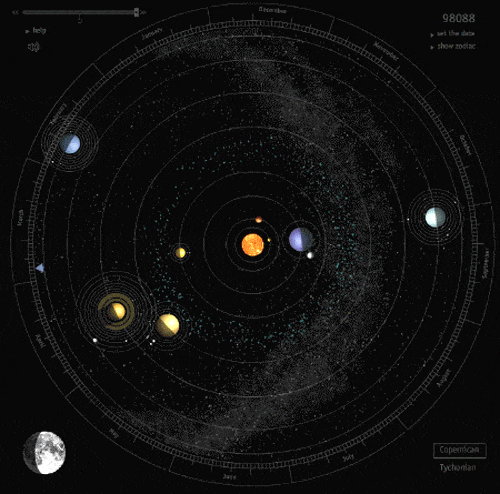



Black Hole Image Makes History; NASA Telescopes Coordinated Observations
A black hole and its shadow have been captured in an image for the first time, a historic feat by an international network of radio telescopes called the Event Horizon Telescope (EHT). EHT is an international collaboration whose support in the U.S. includes the National Science Foundation.
A black hole is an extremely dense object from which no light can escape. Anything that comes within a black hole’s “event horizon,” its point of no return, will be consumed, never to re-emerge, because of the black hole’s unimaginably strong gravity. By its very nature, a black hole cannot be seen, but the hot disk of material that encircles it shines bright. Against a bright backdrop, such as this disk, a black hole appears to cast a shadow.
The stunning new image shows the shadow of the supermassive black hole in the center of Messier 87 (M87), an elliptical galaxy some 55 million light-years from Earth. This black hole is 6.5 billion times the mass of the Sun. Catching its shadow involved eight ground-based radio telescopes around the globe, operating together as if they were one telescope the size of our entire planet.
“This is an amazing accomplishment by the EHT team,” said Paul Hertz, director of the astrophysics division at NASA Headquarters in Washington. “Years ago, we thought we would have to build a very large space telescope to image a black hole. By getting radio telescopes around the world to work in concert like one instrument, the EHT team achieved this, decades ahead of time.”
To complement the EHT findings, several NASA spacecraft were part of a large effort, coordinated by the EHT’s Multiwavelength Working Group, to observe the black hole using different wavelengths of light. As part of this effort, NASA’s Chandra X-ray Observatory, Nuclear Spectroscopic Telescope Array (NuSTAR) and Neil Gehrels SwiftObservatory space telescope missions, all attuned to different varieties of X-ray light, turned their gaze to the M87 black hole around the same time as the Event Horizon Telescope in April 2017. If EHT observed changes in the structure of the black hole’s environment, data from these missions and other telescopes could be used to help figure out what was going on.
While NASA observations did not directly trace out the historic image, astronomers used data from NASA’s Chandra and NuSTAR satellites to measure the X-ray brightness of M87’s jet. Scientists used this information to compare their models of the jet and disk around the black hole with the EHT observations. Other insights may come as researchers continue to pore over these data.
There are many remaining questions about black holes that the coordinated NASA observations may help answer. Mysteries linger about why particles get such a huge energy boost around black holes, forming dramatic jets that surge away from the poles of black holes at nearly the speed of light. When material falls into the black hole, where does the energy go?
“X-rays help us connect what’s happening to the particles near the event horizon with what we can measure with our telescopes,” said Joey Neilsen, an astronomer at Villanova University in Pennsylvania, who led the Chandra and NuSTAR analysis on behalf of the EHT’s Multiwavelength Working Group.
NASA space telescopes have previously studied a jet extending more than 1,000 light-years away from the center of M87. The jet is made of particles traveling near the speed of light, shooting out at high energies from close to the event horizon. The EHT was designed in part to study the origin of this jet and others like it. A blob of matter in the jet called HST-1, discovered by Hubble astronomers in 1999, has undergone a mysterious cycle of brightening and dimming.
Chandra, NuSTAR and Swift, as well as NASA’s Neutron star Interior Composition Explorer (NICER) experiment on the International Space Station, also looked at the black hole at the center of our own Milky Way galaxy, called Sagittarius A*, in coordination with EHT.
Getting so many different telescopes on the ground and in space to all look toward the same celestial object is a huge undertaking in and of itself, scientists emphasize.
“Scheduling all of these coordinated observations was a really hard problem for both the EHT and the Chandra and NuSTAR mission planners,” Neilsen said. “They did really incredible work to get us the data that we have, and we’re exceedingly grateful.”
Neilsen and colleagues who were part of the coordinated observations will be working on dissecting the entire spectrum of light coming from the M87 black hole, all the way from low-energy radio waves to high-energy gamma rays. With so much data from EHT and other telescopes, scientists may have years of discoveries ahead.
Original article:
http://nasa.gov/mission_pages/chandra/news/black-hole-image-makes-history
Time And Space

Extinct tree grows anew from ancient jar of seeds unearthed by archaeologists
by Stephen Messenger
“For thousands of years, Judean date palm trees were one of the most recognizable and welcome sights for people living in the Middle East — widely cultivated throughout the region for their sweet fruit, and for the cool shade they offered from the blazing desert sun.
From its founding some 3,000 years ago, to the dawn of the Common Era, the trees became a staple crop in the Kingdom of Judea, even garnering several shout-outs in the Old Testament. Judean palm trees would come to serve as one of the kingdom’s chief symbols of good fortune; King David named his daughter, Tamar, after the plant’s name in Hebrew.
By the time the Roman Empire sought to usurp control of the kingdom in 70 AD, broad forests of these trees flourished as a staple crop to the Judean economy — a fact that made them a prime resource for the invading army to destroy. Sadly, around the year 500 AD, the once plentiful palm had been completely wiped out, driven to extinction for the sake of conquest.
In the centuries that followed, first-hand knowledge of the tree slipped from memory to legend. Up until recently, that is.
During excavations at the site of Herod the Great’s palace in Israel in the early 1960’s, archeologists unearthed a small stockpile of seeds stowed in a clay jar dating back 2,000 years. For the next four decades, the ancient seeds were kept in a drawer at Tel Aviv’s Bar-Ilan University. But then, in 2005, botanical researcher Elaine Solowey decided to plant one and see what, if anything, would sprout.
“I assumed the food in the seed would be no good after all that time. How could it be?“ said Solowey. She was soon proven wrong.
Amazingly, the multi-millennial seed did indeed sprout — producing a sapling no one had seen in centuries, becoming the oldest known tree seed to germinate.
Today, the living archeological treasure continues to grow and thrive; In 2011, it even produced its first flower — a heartening sign that the ancient survivor was eager to reproduce. It has been proposed that the tree be cross-bred with closely related palm types, but it would likely take years for it to begin producing any of its famed fruits. Meanwhile, Solowey is working to revive other age-old trees from their long dormancy.”
***Does anyone in the know have any comments?
(Source: Tree Hugger)
Red paint on 1,000-year-old gold mask from Peru contains human blood proteins

Thirty years ago, archeologists excavated the tomb of an elite 40-50-year-old man from the Sicán culture of Peru, a society that predated the Incas. The man’s seated, upside-down skeleton was painted bright red, as was the gold mask covering his detached skull. Now, researchers reporting in ACS’ Journal of Proteome Research have analyzed the paint, finding that, in addition to a red pigment, it contains human blood and bird egg proteins.
The Sicán was a prominent culture that existed from the ninth to 14th centuries along the northern coast of modern Peru. During the Middle Sicán Period (about 900–1,100 A.D.), metallurgists produced a dazzling array of gold objects, many of which were buried in tombs of the elite class. In the early 1990s, a team of archaeologists and conservators led by Izumi Shimada excavated a tomb where an elite man’s seated skeleton was painted red and placed upside down at the center of the chamber. Read more.
Pls tell me interesting facts about stars
Interesting facts about stars:
Heavy stars blow up and make heavier elements like gold. So, every bit of gold you’ve ever seen, worn, or touched came from the dying explosion of a star. Other elements made in supernovae include anything on the periodic table heavier than iron
Heavy stars blow up when they start fusing iron. Meaning, the iron in your frying pan, car, and your blood killed a star at least 3 times the mass of the sun.
Some massive stars that die end up compressing all their mass into a star about 6 miles across, or about the size of a city. This is called a neutron star.
To put this in perspective, these stars start out 3 times as big as our sun and all of their mass is crushed into something the size of a city. The space between atoms is squished away, and the protons and electrons combine to form neutrons.
Neutron stars are literally as dense as atomic nuclei
Most stars come in pairs
The most common stellar type is a red dwarf, which is a small, red, dim, cool star.
Honestly, that’s just the first few that come to mind, space is really crazy.
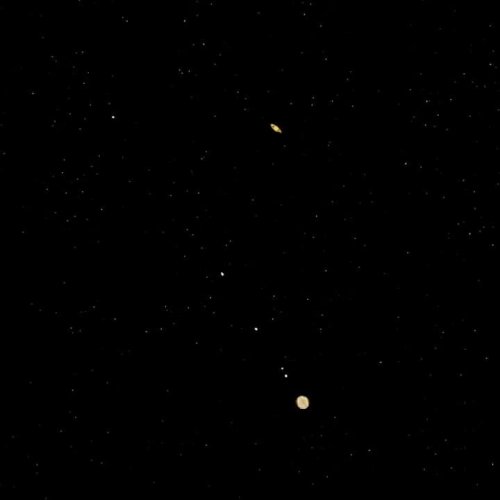
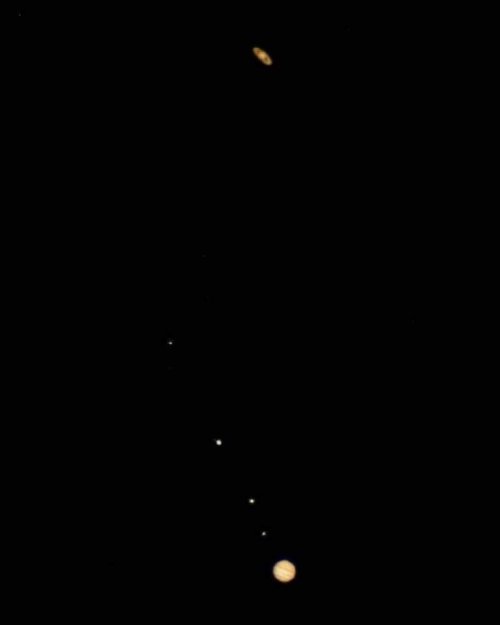
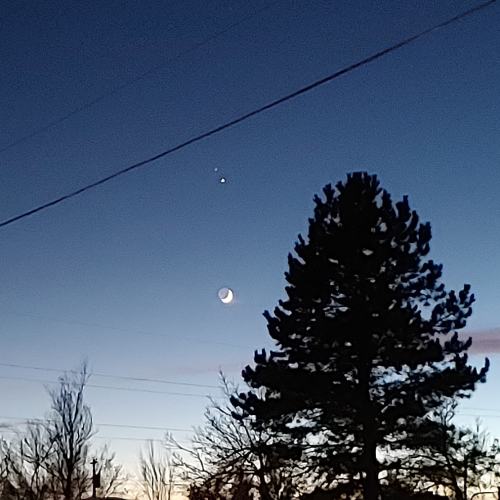
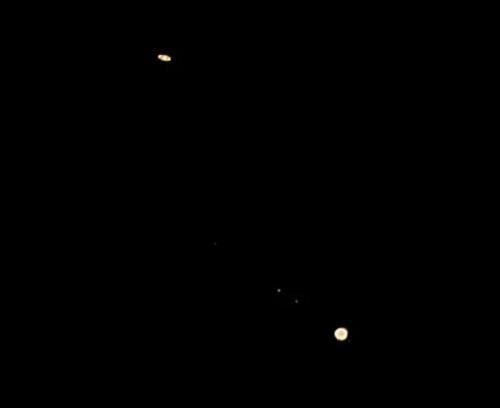
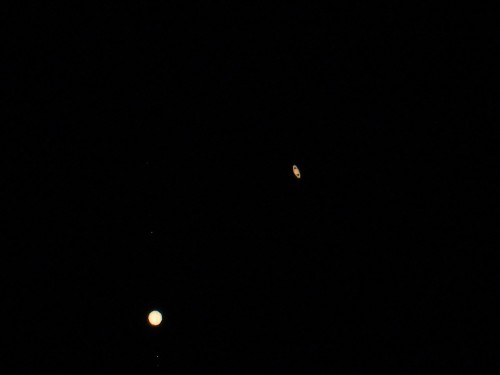
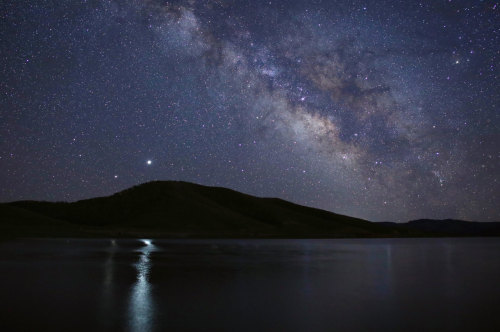
The Great Conjunction: Jupiter and Saturn 🌌.
So you know those mutant strains of radiotrophic fungus they discovered in Chernobyl? The ones that feed on gamma radiation? Those fungi, the radiation-eating fungi? From Chernobyl? They brought some on board the International Space Station and took some measurements. Here is the paper, titled:
A Self-Replicating Radiation-Shield for Human Deep-Space Exploration: Radiotrophic Fungi can Attenuate Ionizing Radiation aboard the International Space Station
Space is full of high-energy radiation, and radiation shielding is a big engineering challenge for Martian habitats and deep-space missions. What they figured out is that an 8-inch thick layer of mutant Chernobyl radiation-eating fungus in the walls of the spacecraft or habitat would serve as a self-replicating, self-sustaining radiation shield for long-haul missions.
This sounds like such a good and normal idea! Let’s do it!
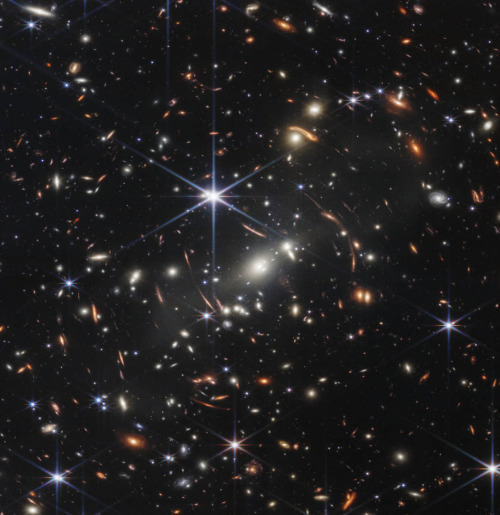
This first image from NASA’s James Webb Space Telescope is the deepest and sharpest infrared image of the distant universe to date. Known as Webb’s First Deep Field, this image of galaxy cluster SMACS 0723 is overflowing with detail. Thousands of galaxies – including the faintest objects ever observed in the infrared – have appeared in Webb’s view for the first time. This slice of the vast universe covers a patch of sky approximately the size of a grain of sand held at arm’s length by someone on the ground.
-
 primordialbitch reblogged this · 5 years ago
primordialbitch reblogged this · 5 years ago -
 adiposeclot liked this · 5 years ago
adiposeclot liked this · 5 years ago -
 turojor8 liked this · 5 years ago
turojor8 liked this · 5 years ago -
 cpknightly1 liked this · 5 years ago
cpknightly1 liked this · 5 years ago -
 waterboerja liked this · 5 years ago
waterboerja liked this · 5 years ago -
 random-acts-of-stupidity liked this · 5 years ago
random-acts-of-stupidity liked this · 5 years ago -
 sherob7533 reblogged this · 5 years ago
sherob7533 reblogged this · 5 years ago -
 angelorvm reblogged this · 5 years ago
angelorvm reblogged this · 5 years ago -
 angelorvm liked this · 5 years ago
angelorvm liked this · 5 years ago -
 erante103 liked this · 5 years ago
erante103 liked this · 5 years ago -
 spidermartini liked this · 5 years ago
spidermartini liked this · 5 years ago -
 zathrasan liked this · 5 years ago
zathrasan liked this · 5 years ago -
 defiantpotato liked this · 5 years ago
defiantpotato liked this · 5 years ago -
 alltheghostssayno liked this · 5 years ago
alltheghostssayno liked this · 5 years ago -
 scifigeneration reblogged this · 5 years ago
scifigeneration reblogged this · 5 years ago
